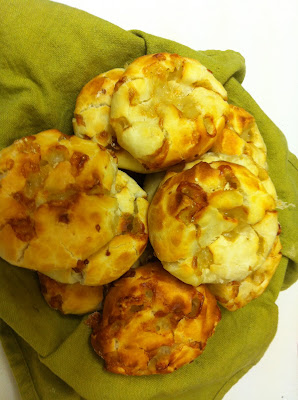As Juan wrote in his last post, we have been talking about soda bread these days. I had something in mind about this, because I'd heard and read it's a really, really easy made and very tasty bread. A perfect idea for a Wednesday evening, when you're tired, don't have much time, but yo're willing for some good home made bread to take for dinner. Well, this Waterford soda bread is what you need in such an ocasion.
It also belongs to the family of brown soda breads, as it's made with wholewheat flour (really sorry for this replay, Juan and I never talked about the recipes we were going to prepare, it was a coincidence the both of us prepared different wheaten breads instead a more classical recipe). And it also belongs to Lepard's 'The handmade loaf'. There are two soda bread recipes in this book. I chose this, because the other one gives a sweet bread, and this wasn't what I was looking for this time. These are the ingredients:
300 gr. wholemeal flour (Irish in my case)
50 gr. oatmeal
20 gr. butter
4,5 gr. bicarbonate of soda
4,5 gr. salt
4,5 gr. caster sugar
200 gr. buttermilk (the recipe says at 20º C, I just took care it didn't come right out from the fridge)
200 gr. whole milk (same tip about the temperature)
Before talking about the procedure, I'll write a bit about buttermilk.For many Spanish people, this is a little bit strange concept. Firstly, because it's not easy to find. The one I bought in a very popular supermarket comes from Germany and doesn't look like the buttermilk you can find in huge amounts in so many Irish shops. Real buttermilk has a yellowish and transparent appereance. Mine looks more like a very liquid but very white yoghourt. What about the taste? Buttermilk really tastes like butter. The other thing tastes more acid. Any other reason to 'despice' buttermilk in sunny Spain? Well, we don't really need it, because we can do hundreds of great cakes and other desserts without using buttermilk.
But if you're reading this from Spain and want to make this bread (or some scones) don't worry, because you can get your own and authentic buttermilk by yourselve at home and don't even need to go to the supermarket to buy this German product. Instead, get the thickest cream you can find (this is not the moment nor the place for a skimmed version), put it in the food processor and make it work for some minutes. Cream will separate in two products: a solid fat -butter, in fact- and a yellowish liquid, the buttermilk. There it is.
OK, now it's time for technique. I told you this is a very convenient idea if you want quick results and no hard working. First, mix the flour, oatmeal and the butter (use your fingers). Then, add salt, sugar and the bicarbonate of soda, and mix evenly. In a different bowl, mix the liquids and put it together with flour. You have to mix -not to knead- everything evenly and quickly, because bicarbonate will start to react as soon as it gets in touch with the buttermilk.
 |
| No holes this time |
Put it in the oven, preheated at 210º C, covered with foil for 25 minutes. Then, remove the foil and bake for another 25 minutes. Quick, nutritional and wonderful.
 Ingredientes para 6 bollos:
Ingredientes para 6 bollos:













